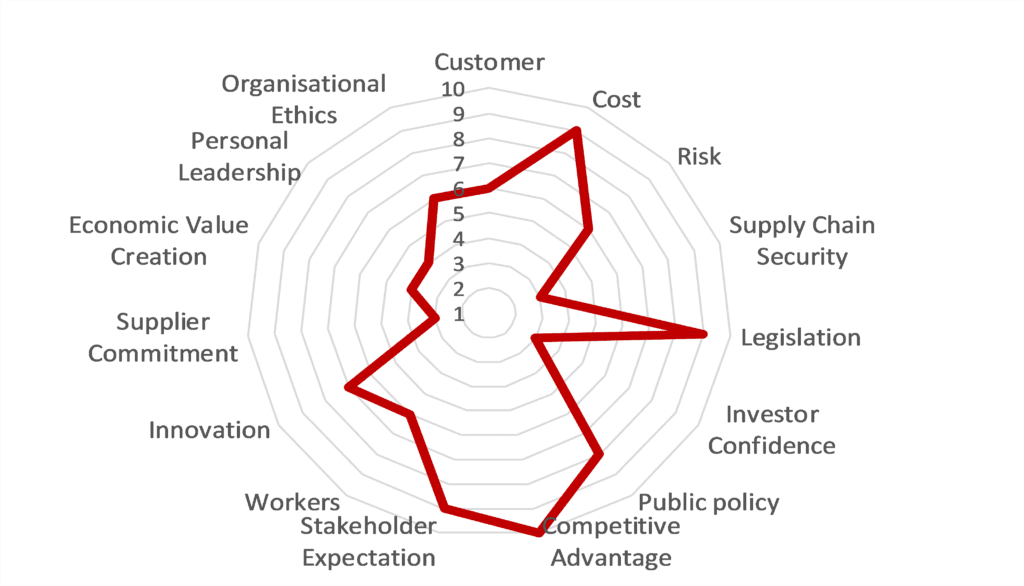“We want to be seen as an ethical organisation, thereby attracting, motivating, and retaining our staff. Doing what’s right for our business and for our people who are at the heart of it.” – Water Utility Company.
“Our customers expect of us to be able to demonstrate that our products are eco-friendly, responsibly sourced, and do not breach human rights.” – Fashion Merchandiser.
“At work, it’s all about having that competitive advantage over peers in our industry. Offering goods and services with a sustainability solution in it, helps us have that competitive advantage.” – Tier 1 Contractor, Infrastructure projects.
“We want to ensure that not just our ESG ratings, but also the actual value we deliver through leaving a legacy has a positive impact on people, the planet, and profit.” – Global Sports Goods Designer & Manufacturer.
These are some of the discussions I hear when engaging with delegates on my sustainable procurement workshops.
There are a number of key drivers for sustainable procurement, and the motivations of organisations practising sustainable procurement differ depending on the type of organization and the context in which they operate:

An example of how an organisation has different priorities for the drivers of ISO 20400.
Understanding what drives sustainability goals and ambitions is every bit as important as ensuring it feeds into your policies and strategies. The identification of your drivers is the starting point that will help shape those policies and strategies.
Barts Health, an NHS Trust, had public policy and legislation drivers as part of their sustainable procurement approach in order to align with PPN 06/020. They engaged with us early on to ensure we could identify where in the procurement process; we could influence the various steps to ensure a robust framework that would deliver social value.
Using PPN 06/020 as the driver, we helped shape their strategy documents, their tender questions, model responses and even the balance score card mechanism. This allowed for their sustainability themes and criteria to be embedded within their procurement process and contract and performance management post contract award.
Discover the full case study here.
If you would like to learn more, reach out to our Lead Sustainable Procurement Consultant – Mellita D’silva.

Mellita D’Silva
Sustainable Procurement Consultant
mellita@actionsustainability.com

This was posted in All Topics, Energy & Carbon, ISO 20400 Sustainable Procurement
Our Head of Climate, Dr James Cadman, shares his insights on how organisations can effectively embed carbon reduction into their sustainable procurement practices using the ISO 20400 framework.
Read Article
This was posted in ISO 20400 Sustainable Procurement
Addressing procurement barriers is essential for harnessing the full potential of SMEs in the UK. Consultant, Sarah Chatfield explores the barriers to procurement which SMEs in the UK face and the vital role they play within the economy.
Read Article
This was posted in Energy & Carbon, ISO 20400 Sustainable Procurement
Developed by Action Sustainability, "Responsible Sourcing of HVO – A Comprehensive Guide" explores how to responsibly procure Hydrotreated Vegetable Oil (HVO).
Read Article